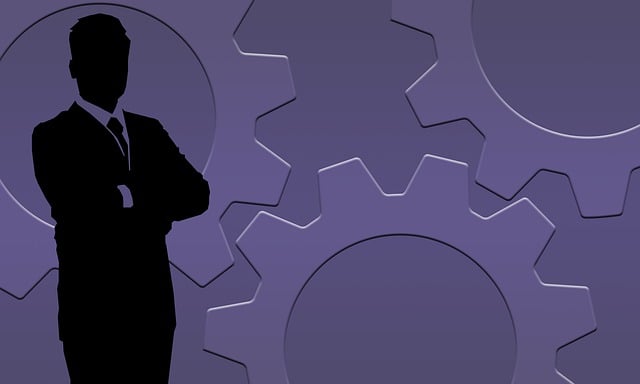The 5S methodology, rooted in lean management, transforms chaotic workspaces into efficient environments through sorting, setting in order, shining (cleaning), standardizing, and sustaining. This approach enhances productivity, reduces waste, and promotes process standardization, empowering employees to drive continuous improvement and fostering a culture of order and efficiency in dynamic business settings.
In today’s dynamic business landscape, a structured work environment is key to enhancing productivity and fostering efficiency. This article delves into strategies for creating an organized space, focusing on the power of 5S methodology and Lean Management principles. We explore how process standardization benefits workplaces, highlighting the role of 5S training in employee empowerment and continuous improvement. Additionally, we provide insights on maintaining order in fast-paced environments, ensuring sustainability through effective practices. Discover how these techniques revolutionize workflows and elevate overall workplace performance.
- Understanding the 5S Methodology for Workplace Organization
- Lean Management: Streamlining Processes for Continuous Improvement
- Benefits of Process Standardization in a Structured Environment
- 5S Training: Empowering Employees for Efficient Workflows
- Continuous Improvement: The Key to Sustaining Structured Workspaces
- Strategies for Maintaining Order in Fast-Paced Workplaces
Understanding the 5S Methodology for Workplace Organization

The 5S methodology is a powerful tool for transforming chaotic workspaces into efficient, organized environments. It’s a core principle within lean management, focusing on process standardization and continuous improvement. The ‘5S’ stands for five disciplined steps: Sort (removing unnecessary items), Set in Order (arranging essential tools and materials), Shine (cleaning and maintaining the workspace), Standardize (establishing clear processes), and Sustain (continuing the cycle of improvement).
Implementing 5S training encourages employees to actively participate in workplace organization. By fostering a culture of order, cleanliness, and efficiency, it enhances productivity and reduces waste. This systematic approach not only improves individual work stations but also creates a more comprehensive, streamlined workflow throughout the entire facility, ensuring that everyone operates within a structured and optimized environment.
Lean Management: Streamlining Processes for Continuous Improvement

Lean Management is a powerful approach that focuses on streamlining processes and eliminating waste in the workplace. This method, often associated with 5S training, aims to create an organized and efficient work environment. By implementing 5S—Sort, Set in Order, Shine (Clean), Standardize, and Sustain—organizations can achieve remarkable results in terms of workplace organization and continuous improvement.
This system promotes process standardization, ensuring that tasks are completed efficiently with minimal variation. Regular training sessions reinforce these principles, fostering a culture of continuous improvement where every employee plays a role in identifying and eliminating inefficiencies. As a result, lean management techniques can lead to increased productivity, reduced costs, and enhanced overall workplace satisfaction.
Benefits of Process Standardization in a Structured Environment

In a structured work environment, Process Standardization through methods like 5S training and lean management brings significant advantages. By implementing 5S—Sort, Set in Order, Shine (Clean), Standardize, Sustain—organizations enhance workplace organization and efficiency. This involves systematically arranging tools and equipment, creating a clean and orderly space that reduces waste and improves productivity.
Furthermore, process standardization facilitates continuous improvement through lean management principles. It allows for the identification of inefficiencies and bottlenecks, enabling companies to streamline operations and optimize resource utilization. This not only enhances overall workplace organization but also fosters a culture of continuous enhancement and quality assurance.
5S Training: Empowering Employees for Efficient Workflows

Implementing 5S Training is a powerful strategy for transforming chaotic work environments into highly efficient and organized spaces. This lean management approach focuses on five key principles: Sort, Set in Order, Shine (Clean), Standardize, and Sustain. By empowering employees through 5S training, organizations can drive significant improvements in workplace organization and overall productivity.
The process begins with sorting, where every item is evaluated for its purpose and relevance. This meticulous step ensures that only essential tools and materials are retained, eliminating clutter and streamlining workflows. Following this, the ‘Set in Order’ phase involves arranging items logically, making it easier to access what’s needed quickly. Regular cleaning and maintaining a ‘Shine’ culture promote a safe, sanitary environment. Standardization, the cornerstone of 5S, establishes consistent processes, ensuring every team member follows the same protocols, thereby enhancing efficiency through process standardization. Lastly, sustaining these practices requires ongoing commitment, regular audits, and continuous improvement initiatives.
Continuous Improvement: The Key to Sustaining Structured Workspaces

In today’s dynamic business landscape, maintaining a structured work environment is paramount to ensuring efficiency and productivity. However, achieving and sustaining this structure requires more than just initial organization; it demands continuous improvement. This is where 5S training and lean management principles come into play as powerful tools for workplace organization. The ‘5S’ method—Sort, Set in Order, Shine (Clean), Standardize, and Sustain—is a systematic approach that focuses on process standardization, enabling employees to quickly identify and eliminate waste.
Regular 5S continuous improvement initiatives foster an environment where every aspect of work is scrutinized for potential enhancement. By encouraging employees to regularly participate in these processes, organizations can ensure that their structured workspaces remain optimized. This culture of constant refinement aligns with lean management principles, promoting a fluid, adaptive, and efficient workplace organization. Consequently, businesses not only maintain productivity but also stay agile, responsive, and competitive in an ever-changing market.
Strategies for Maintaining Order in Fast-Paced Workplaces

In fast-paced workplaces, maintaining order can be a challenge, but implementing structured strategies is key to enhancing productivity and efficiency. One powerful approach is adopting 5S training, a lean management philosophy that emphasizes workplace organization. This method involves sorting, setting in order, shining (cleaning), standardizing, and sustaining—creating a systematic environment that minimizes clutter and streamlines processes. By teaching employees the 5S principles, organizations can ensure everyone understands their role in keeping the workspace organized.
Process standardization is another vital tool for maintaining order. Standardized procedures provide clear instructions for tasks, reducing errors and improving consistency. This strategy ensures that every team member follows the same steps, making it easier to track progress, identify bottlenecks, and implement continuous improvement initiatives through 5S continuous improvement cycles. Regular reviews and updates of these processes can further enhance their effectiveness, fostering a culture of order and efficiency in even the busiest workplaces.
